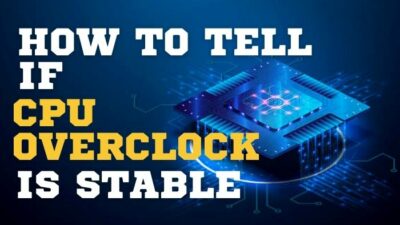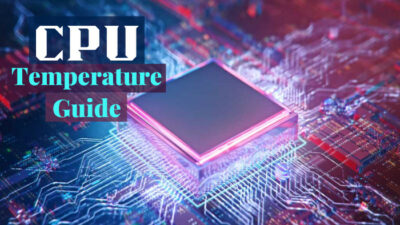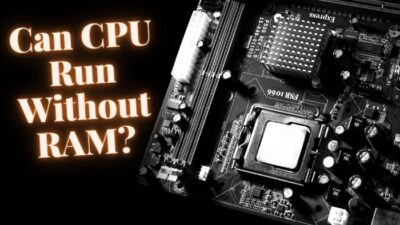You brought a new CPU and want to install it on your older Motherboard. But to do that, You need to update your BIOS. Now You are wondering, can you do it with your CPU installed?
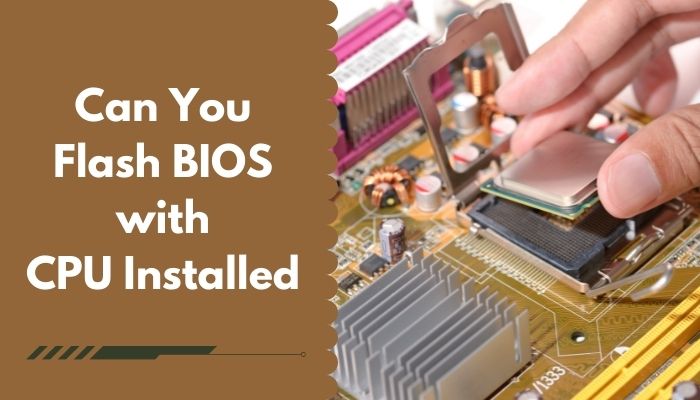
Don’t worry. You are in the correct place. I’ve worked in computers for a long time, building many computers, so I’ve also faced similar situations like this countless times.
So read the article, and you will get your answer in no time.
Flash BIOS with CPU Installed: Can you Do that?
Yes, It’s possible to flash your BIOS with CPU installed. Also, flashing the BIOS with the CPU installed is essential in some cases. But it’s not an absolute necessary. You can flash or update BIOS without the CPU as well. However, Newer Motherboard has a quick flash button.
And in this case, you don’t need any components installed in the Bord except the power cord. But if all the Components are installed, It won’t cause any problems flashing the BIOS.
But it is better to install the CPU. Because by this way you can check the CPU compatibility With new Motherboard.
Overview of BIOS Update/Flash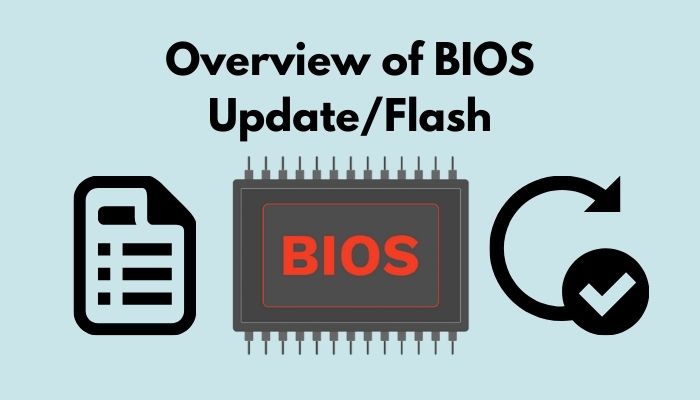
BIOS stands for basic input/output system, and it’s a program that starts the computer system with the help of the processor.
It’s like the ignition key in a motorcycle.
BIOS is stored in your motherboard chip. It activates when you power up your computer. Firstly it starts the program called power-on-self-test, known as POST, Then, the BIOS gives control to the BOOT loader, and the boot loader starts the system.
The BIOS works behind the scene without getting in the way of the Operating System. It primarily executes 4 functions,
- POST
- BOOTstrap loader
- Locating Drivers & Software
- CMOS setup
Here are the 4 functions of BIOS explained:
01. POST
POST stands for Power-on self-test, and it is Checking the hardware before loading the system. When powered on, the BIOS first checks the system and then lets the OS start.
02. BootStrap loader
After POST, the BIOS locates the OS and boots it up. So that the Windows (Operating System) can load and you can use the windows.
03. Locating Drivers & Software
The BIOS locates the Drivers and the software to link the OS when the OS is running.
For example, The BIOs locate the Sound driver and links it with Windows so that you can play the audio and get the sound from your sound device.
04. CMOS setup
COMS is known as Complementary-metal-oxide-semiconductor. It is BIOS’s non-volatile memory for which you can change the hardware and system setting. Like changing the resolutions in the Monitor.
The manufacturer releases a newer version of BIOS to fix bugs or make your motherboard compatible with newer processors.
If you have a desktop PC, you will get your BIOS version from your motherboard company, In the case of Laptops, the leading company releases the newer BIOS. The BIOS are computer specific. So you need specific Software for specific Models of BIOS.
When should you Update your BIOS?
BIOS update doesn’t affect the performance of the PC. But it can cause additional problems if the release software is buggy such as BIOS not detecting USB, you should update your BIOS only the time you need to.
I’ve also experienced issues like BIOS settings are not saving. It gets reset after every boot. Updating the BIOS fixed it for me.
Besides, BIOS corruption is a clear indication that an update is due.
Here are the notable times to update your BIOS :
- Merging your old Model with a brand new CPU.
- PC is taking too much time to Boot
- The CMOS in your computer isn’t working properly
- When your PC/MOBO manufacturer releases a mandatory BIOS update.
- When Your PC company adds new hardware support in the BIOS Update.
If your PC is fully functioning and doesn’t have any problems, you do not need to update Your BIOS because it can cause some severe issues.
That said, when you see CPU fans are spinning but not detected in the BIOS, you should update it. This will sort the issue out.
What Problems Can you Face while BIOS Flashing?
Updating BIOS is not similar to updating the software or the driver, and it doesn’t usually add any new features or improve the performance or improve the securities. Mainly the BIOS update fixes some bugs or helps the MOBO to be compatible with the CPU.
Here are some problems you could face during BIOS Flushing /Update:
- If Your BIOS file is slightly different from your exact motherboard model, it will unboot the system.
- While flashing the BIOS, your motherboard can be unbootable if The CPU installed in the motherboard gets too hot.
- If there’s a disturbance of electricity in the middle of BIOS flashing /updating, the MOBO will become a piece of junk.
- If you have installed a beta version of the BIOS or a newly released version, you may face various bugs during boot.
Here’s the solution if you face these problems. You just need to remove the battery of your motherboard. Because in most cases, if you withdraw your battery, the BIOS will reset to default, and hopefully, you can start the process again.
However, If this process won’t work, there are no other in-house solutions. You need to contact your motherboard manufacturer.
Can you Flash BIOS without a CPU/RAM/HDD?
The simple answer is yes. The motherboard has a button that can quickly flash the BIOS; no CPU /RAM/HDD is required.
You need a USB flash drive, motherboard power connector, and sufficient power flow to flash/update your BIOS.
To update your BIOS without any other components installed:
- Firstly, You need to download the New BIOS file from your manufacturer’s website.
- Secondly, Copy your BIOS file to a USB Drive that you selected
- Next, put out your motherboard and connect the 24-pin power cable.
- Then, Insert the USB drive and press the button beside the USB port.
- And wait for the lights to go off.
This may take several minutes, and then your BIOS is ready and UPDATED. You can check your BIOS version by typing “msinfo32” in the Run menu. The Window that opens will show the current BIOS version.
If the keyboard however does not work in BIOS, disconnect and reconnect it again.
Factors to Consider while Updating BIOS
BIOS upgrading has its risks. It’s an easy process, but you need to watch some small but significant factors.
Here are the factors you need to consider while UPdating or flashing the BIOS:
- Every BIOS is different for every piece of the motherboard. So while Downloading the FIle, keep the model number in mind.
- For Downloading the new BIOS file, you should always use only the manufacturer’s website because other websites may contain faulty files. In the case of BIOS, the defective file is a significant problem because faulty files can make the MOBO unbootable.
- For the USB drive to use, you need to ensure it is formatted in “FAT32”; otherwise, the MOBO won’t recognize the USB.
- You must maintain a sustainable power flow while updating/flashing the BIOS. For desktops, if you have a UPS, then it’s convenient. And for laptops, make sure to have 100% battery.
FAQ
How many times can I flash or update BIOS?
For the current 1Mb,2MB, and 4Mb EEPROM Chips, the limit is 10,000 times.
How do I enter BIOS?
During boot, you will see “Press “*” to access BIOS in the bottom right corner.” That is your BIOS key for that motherboard, and you need to press that key rapidly to access the BIOS.
How long does flashing BIOS take?
It should take around 1-3 minutes, in some cases 5 minutes. But you should wait about 10 minutes to be safe.
Conclusion
Long story short, you can update your BIOS with CPU or other installed components and not install any components.BIOS update/flash is not dependable in any of the components, and it just needs sufficient power and a working USB drive.
So I think you now know the answer to the question you asked in the beginning. And if you read this article thoroughly you now know what problems you could face during updating the BIOS and how to get rid of those problems.
And I’ve also included how you can update BIOS without any components installed. So follow my steps and you will be done in no time.
If you face any problems fill free to ask me. Thank you.

